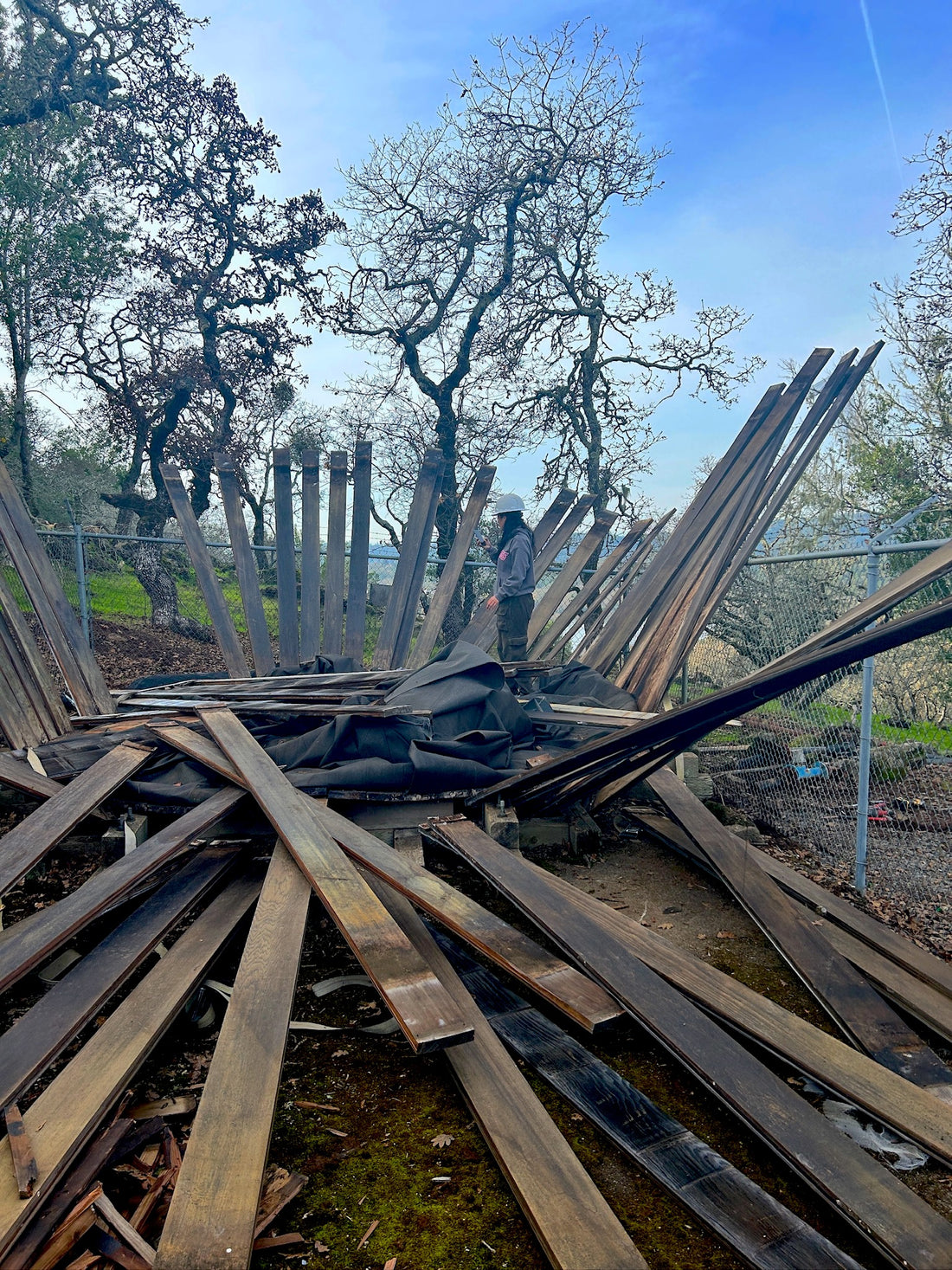In 2023, GreenLynx: saved 218,151 pounds of materials (109 tons) for reuse in our community, achieving a whopping 94% diversion rate; all with only 400 splinters between the 11 of us. We deconstructed or salvaged from around 30 homes and outbuildings, including:
- 3 geodesic domes,
- a 2 story house in Sonoma,
- a full floor condo in San Francisco,
- a water tower in Santa Rosa, and the interior of a home overlooking Tomales Bay, to name a few.
A few months ago we had a new customer stop in to check out our materials, and as he was perusing our lumberyard, I approached him with one of my 3 usual greetings: “let me know if you have any questions”. Little did I know I’d still be ruminating on the nature of that conversation months later. He asked whether we were subsidized and how our model was funded. I laughed and explained that we were self-funded (Thanks Mom!), and that our deconstruction work not only brings in materials, but helps subsidize our store. I don’t remember his exact response but I received it as “wow, that's rough”.
It turns out that he works for a local garbage hauler and recycling company, which of course we are all now required to pay for their services at our homes and businesses on a monthly basis. Our garbage, recycling and now composting haulers have essentially become a utility, and they are able to fairly accurately predict years in advance what their revenues are going to be in comparison to the volatile construction industry we at GreenLynx find ourselves in. Over the past 2 decades, we have spent billions of taxpayer dollars to be well trained by consultants, waste management companies, and recycling coordinators at our local agencies to think of the stuff coming out of our homes and businesses as waste that can be managed by paying the “magical” truck that shows up at our door every week.
Imagine if we had a county contract, subsidies, a bigger space, a deconstruction ordinance, and a denailing robot - we could do at least 10-100 times more reuse in Sonoma County alone. We are small, but we want to be mighty. Three of these things are on the horizon (yes - a robot!), but a contract, grant or subsidies consistently elude us - and the reuse industry as a whole. Despite reuse being a higher and better use of resources than composting or recycling, as well as sequestering embodied carbon and preventing methane, reuse does not fit into any government equations. Not yet at least.
Reuse as an industry isn’t quite as straightforward as the blue, green and black bins we have come to know. We are a complicated conglomeration of logistics and a multitude of different types of materials. At GreenLynx for instance, each new project involves a change in logistics and the materials vary within each building. For every project we do, we have bid on and lost 10 others.
GreenLynx learned during Covid that we are an essential business. But like many essential workers during that time, we definitely feel like a little support for our work would go a long way. We love what we do because we know our effort benefits our community, our environment, and is offsetting climate emissions. Plus - let’s face it - it’s fun. We don’t have flashy marketing materials or government funded staff to help sell you on our story. This year we can finally report on our reuse tonnage because we took the time to stop at our local rock shop, Johnson Rock, to weigh each load, and then spent countless hours tracking our work in spreadsheets. Imagine how much more we could do if our government put taxpayer money into reuse. Our state agency CalRecycle has a $2 billion dollar budget and 1,000 staff members, and yet only a small fraction, .001%, of those funds go to reuse - specifically bag ban education and food recovery.
Where we put our collective money matters.
If we really want to prevent climate change from becoming worse than we are already experiencing, it might be worth it to question where we currently spend our money and where our government spends our money. Einstein said “we cannot solve our problems with the same thinking that created them”. We have created a “waste” system designed for the lifestyle we lead that is literally burning itself down. It will take a lot of unlearning to make reuse a part of our daily routines, and much more than .001% of our state budget on infrastructure.
At GreenLynx, we have built a materials system that we believe leads us in a different direction. Every now and then a customer will say to us at our store or lumberyard “Thank you for being here”. Honestly, when we hear that, we know that some people just get it. And that means the world to us.

